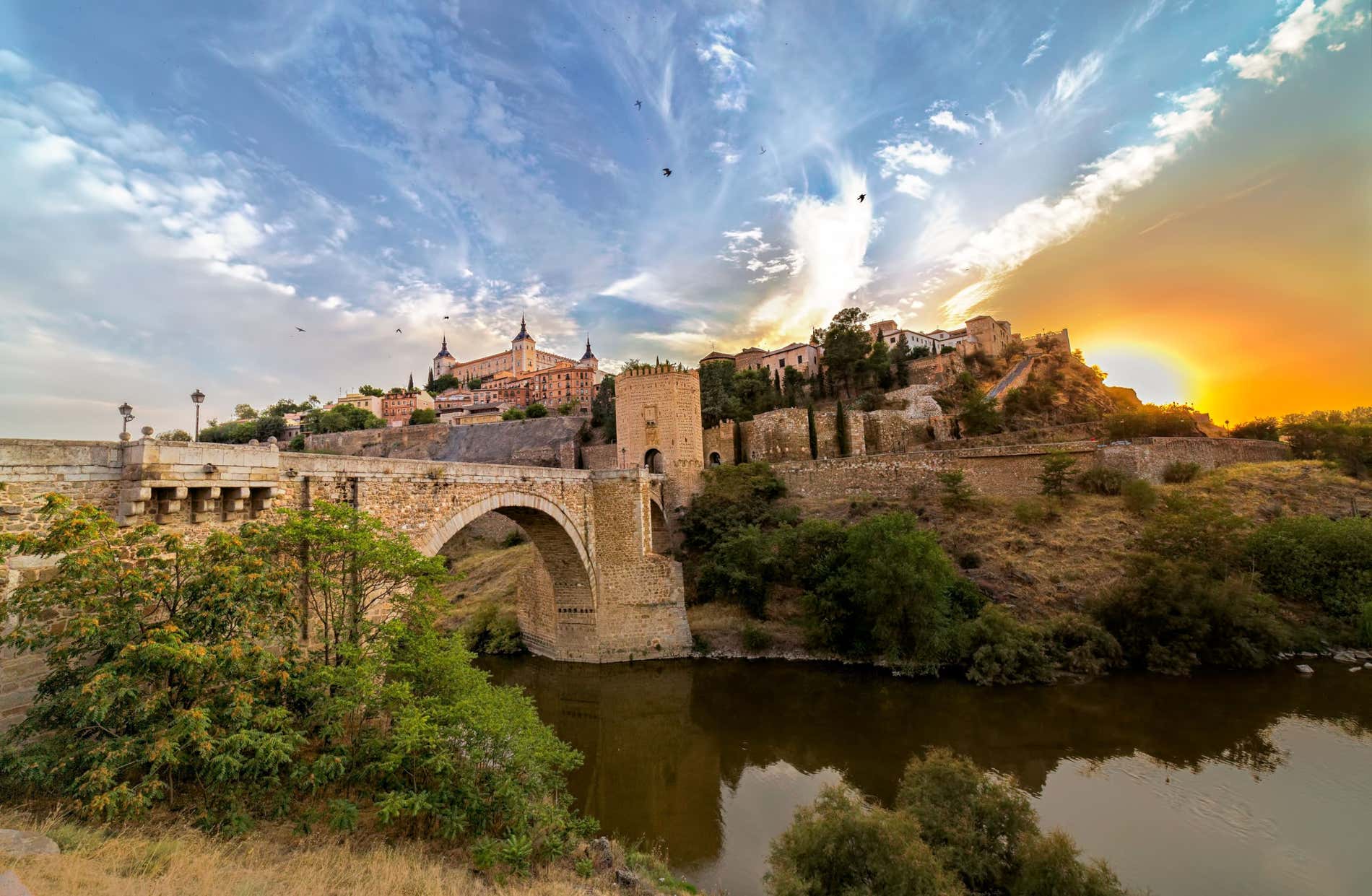UNESCO Sites in Madrid: 3 City Escapes off the Beaten Path
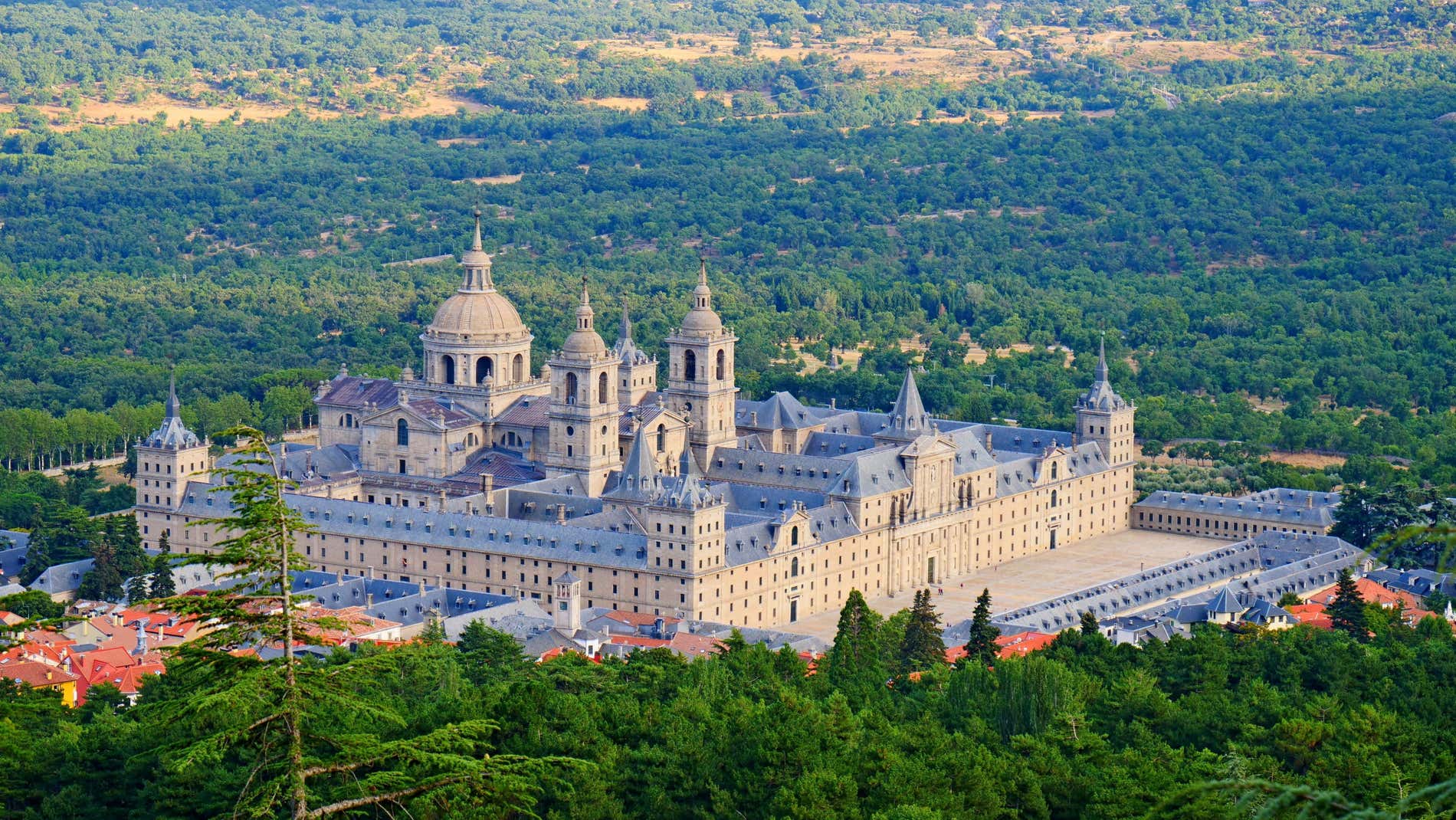
Madrid is a cultural powerhouse, but what many visitors don’t know is that they’re less than an hour away from the room where Philip II governed half of the world. While crowds search for the best tapas in La Latina and queue up around the corner at the Royal Palace, five breathtaking UNESCO World Heritage Sites lie within or just beyond the city limits.
The Region of Madrid is one of the few regions in Europe with so many and such diverse UNESCO-recognized World Heritage sites. These include the Landscape of Arts and Sciences—an elegant cultural axis stretching from the Prado Museum to El Retiro Park; the Ancient Beech Forest of Montejo, part of a pan-European recognition for primeval woodlands; and historic areas in three fascinating towns: Aranjuez, El Escorial, and Alcalá de Henares.
In this article, we’re focusing on these last three remarkable destinations that are just a short ride from the capital and often overlooked by international visitors. Each place offers a unique window into Spain’s imperial, intellectual, and artistic legacy. Visit a royal monastery where empires were ruled, a palace complex that defined European garden design, and the university town where Spanish was first standardized—all within easy reach inside the Region of Madrid.
Whether you’re traveling by train or car, these UNESCO sites make for perfect day trips to escape the city and immerse yourself in centuries of living history. Madrid may dazzle with its museums and nightlife, but its greatest stories often begin just beyond its borders.
Discover Aranjuez, the Garden of Spanish Monarchy
“Winter in Madrid, spring in Aranjuez…” Before there was Instagram travel, there was the Renaissance grand tour. For centuries, the Spanish Royal Family didn’t just stay put in Madrid—they moved through a network of seasonal palaces that expressed the grandeur of their empire through architecture, gardens, and carefully curated landscapes.
Just 50 kilometres (31 miles) south of Madrid lies Aranjuez, a city shaped by royal vision. Designated a UNESCO World Heritage Site in 2001, the Aranjuez Cultural Landscape is one of the most unique and harmonious expressions of nature and human creativity in Spain. Developed over more than three centuries under the direct influence of the Crown, this remarkable site brings together rivers, orchards, palaces, gardens, forests, and city planning into a seamless whole.
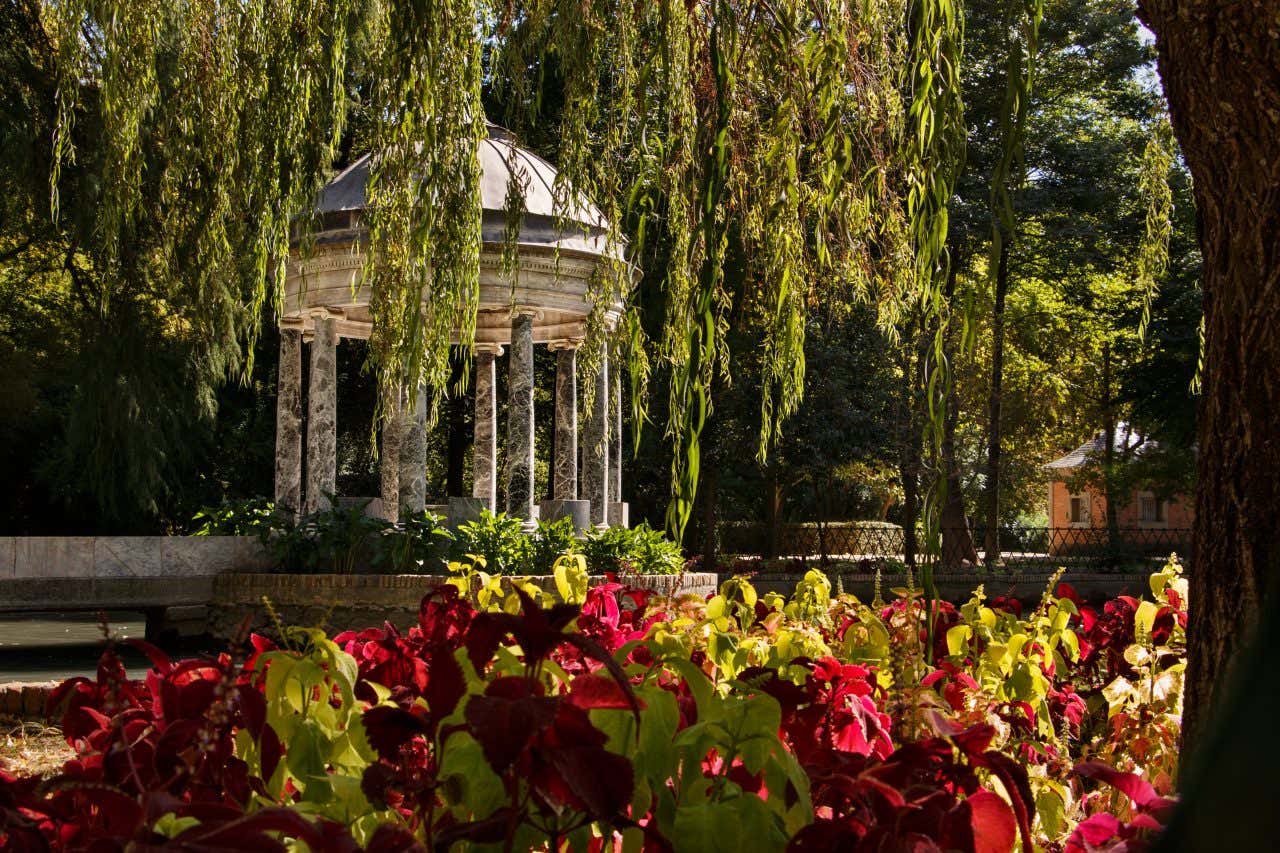
The Royal Palace of Aranjuez was commissioned by King Philip II in the 16th century and became the official spring residence of the Spanish monarchs. But it was much more than a retreat—it was an ambitious political and aesthetic project. Built where the Tagus and Jarama rivers meet, the site was conceived as a utopian blend of geometry and nature, science and art, control and beauty.
You can enter the Royal Palace of Aranjuez with tickets and visit rooms that span centuries of decorative styles and monarchic tastes. The Queen’s Room offers a rare glimpse into the personal world of royal women, while the Throne Room captures the opulence of Bourbon power. Together, these interiors reflect the artistic and diplomatic intentions of the Spanish court.
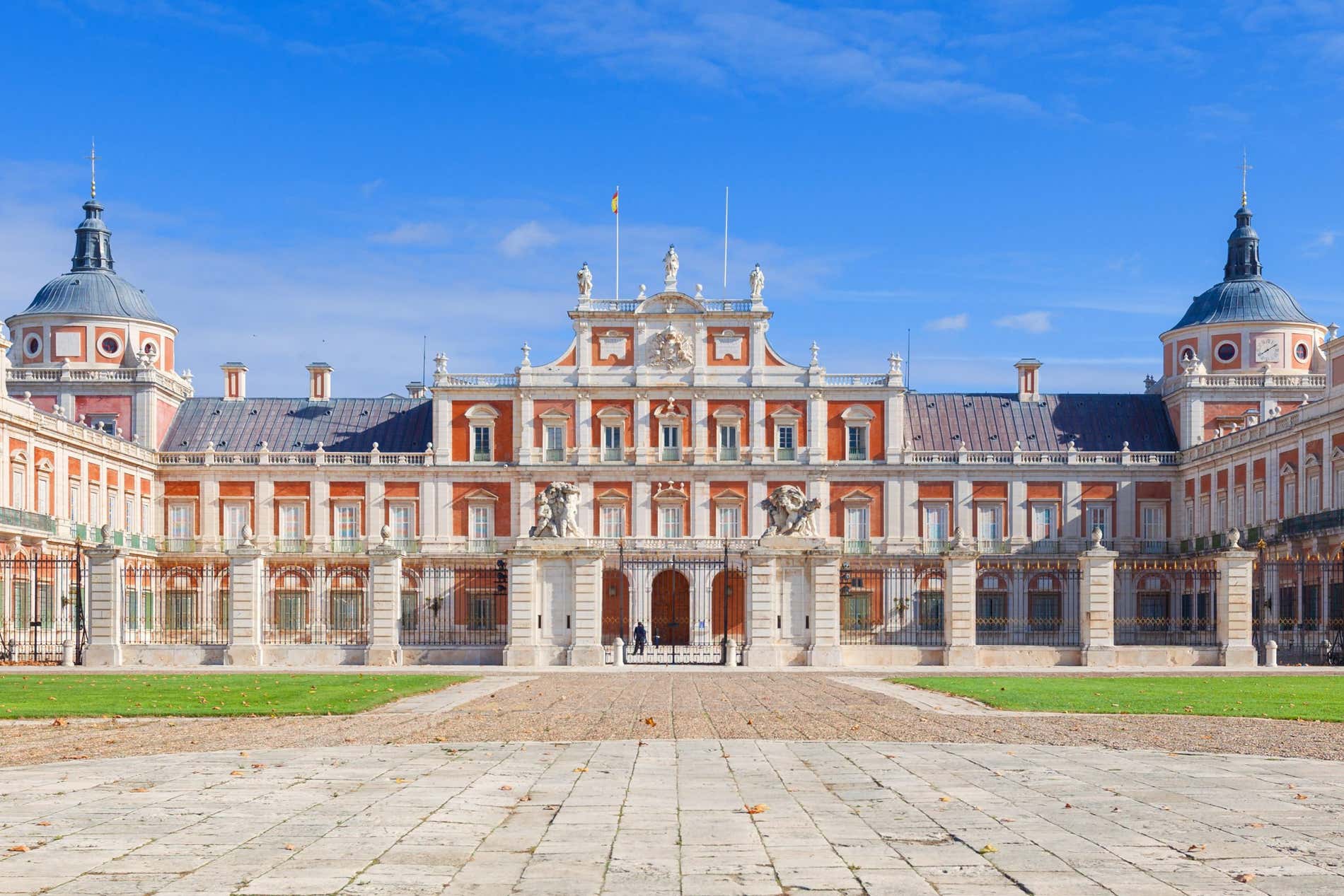
How to Get There
Take the C-3 Cercanías line from Madrid’s Atocha Station and arrive in just under an hour.
Other Things to Do While in Aranjuez
Aranjuez is more than gardens and palaces. The cultural landscape includes vegetable gardens, groves, hydraulic systems, and even early Enlightenment experiments in plant acclimatization and livestock breeding. The town layout itself—planned with geometric precision—is part of the broader vision of harmony between urban life and natural beauty. It’s a place where Enlightenment ideals and imperial ambitions intersected to shape not just land, but legacy.
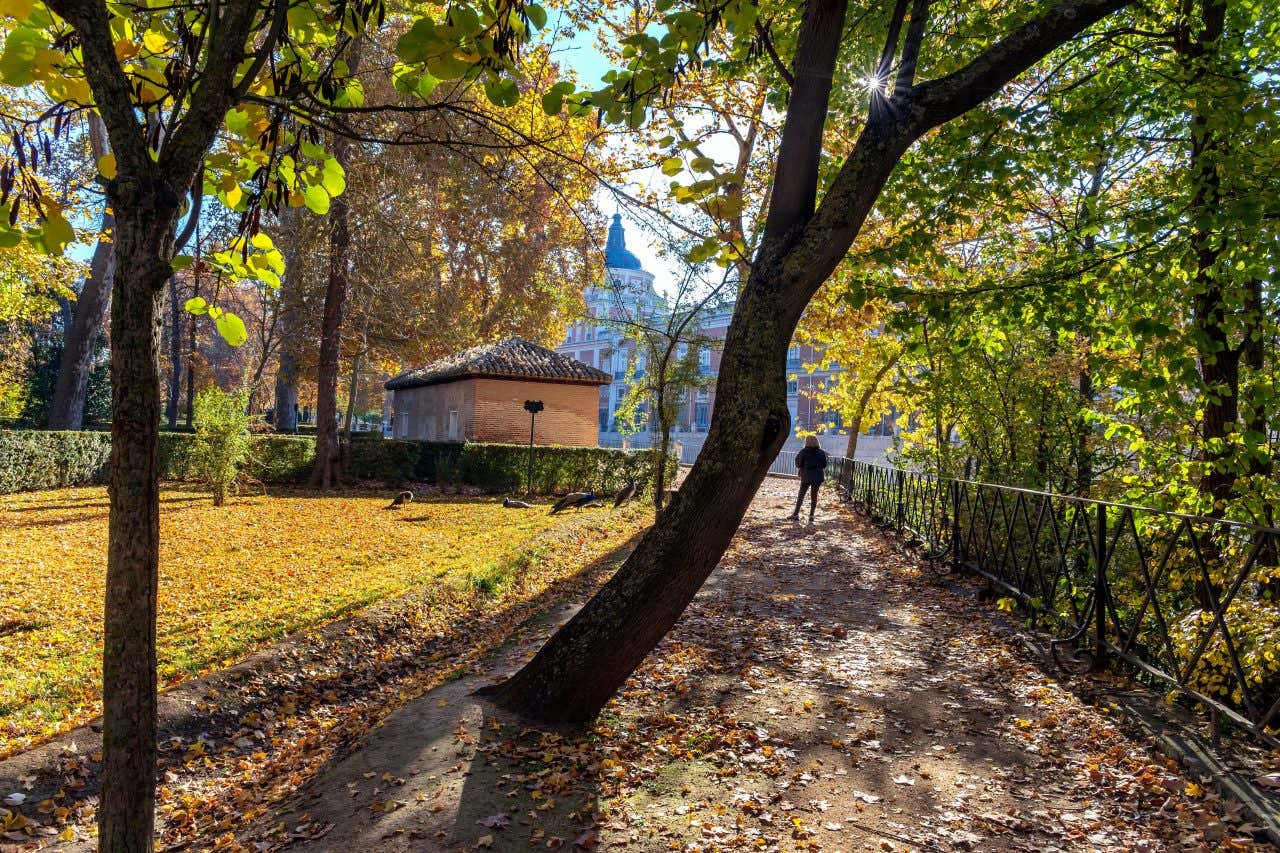
There’s plenty more to see in this historic town. Hop aboard the Aranjuez tourist train for a family-friendly ride around the must-see sites. For larger groups or a more tailored and exclusive experience, we recommend this private tour of Aranjuez.
Looking to take your visit to the next level (literally)? See Aranjuez from every angle on a hot air balloon ride, and toast to an unforgettable day rooted in Spanish cultural heritage.
Visit San Lorenzo de El Escorial, A Royal Complex
If the Palace of Aranjuez celebrated natural beauty, the Royal Monastery of El Escorial celebrates raw power. This monumental complex, 45 kilometres (28 miles) northwest of Madrid, stands as Spain’s most ambitious architectural achievement—a royal palace, basilica, crypt, and library all in one.
El Escorial was also commissioned by King Philip II, whose reign marked the peak of the Spanish Empire, earning it the famous nickname “the empire on which the sun never sets.” Today, El Escorial remains the largest Renaissance building in the world, with over 4,000 rooms from which Philip II governed his global empire, receiving news from Manila to as far as Mexico.
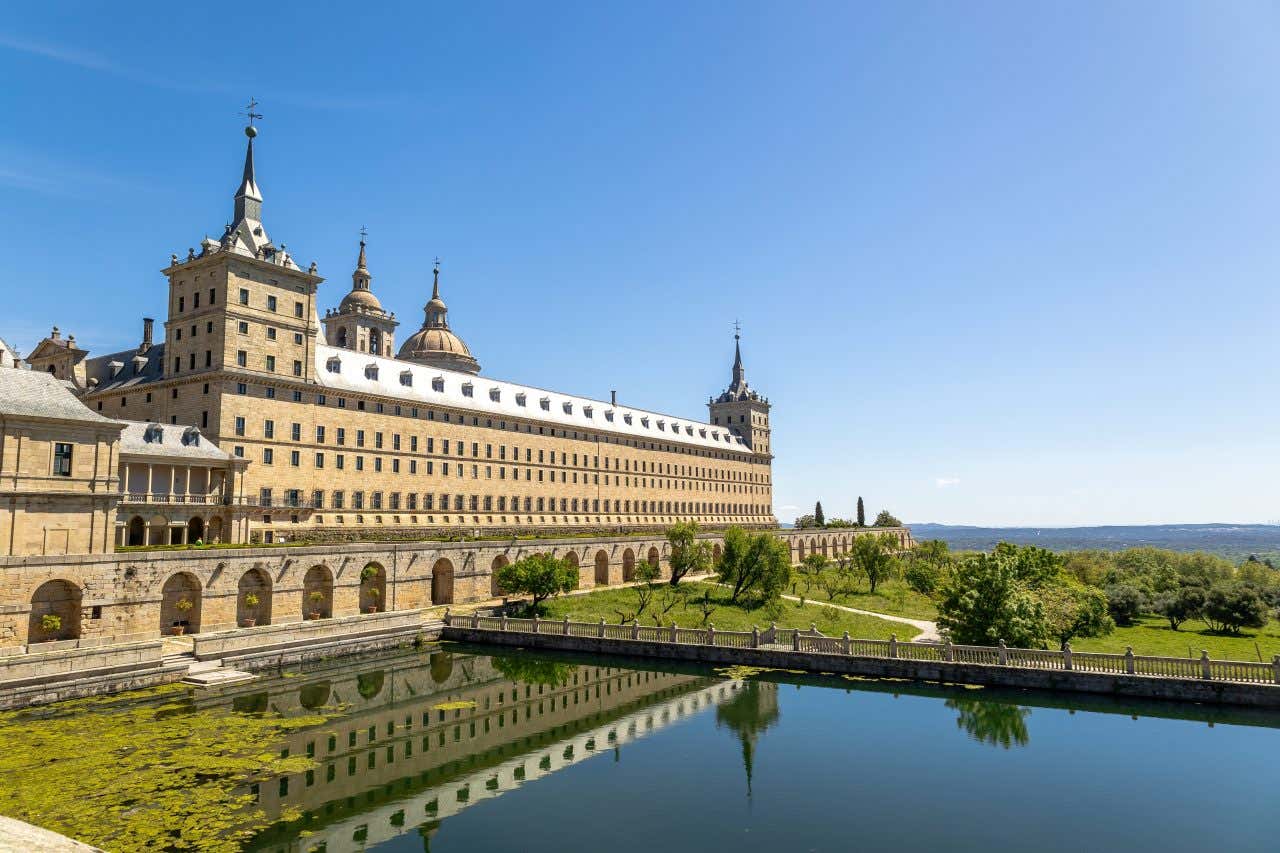
The Royal Library is another highlight of the complex, housing over 40,000 volumes of vital historical importance. Containing everything from Aztec codices to Portuguese navigation charts, this historic collection was the academic arsenal of an empire. Meanwhile, the Pantheon of Kings serves as the eternal resting place for King Philip II, Queen Isabella II, and many more generations of Spanish royals from the Habsburg and Bourbon dynasties.
Options for Visiting the Monastery
Visiting the Royal Monastery of El Escorial is a must for history buffs. With your tickets, you can step inside and stand in the same room where Philip II once ruled half the world.
For a deeper experience, booking a guided tour is the best way to truly appreciate the site’s history and symbolism. You’ll uncover hidden details, explore key areas with expert context, and come away with a much richer understanding of this monumental place.
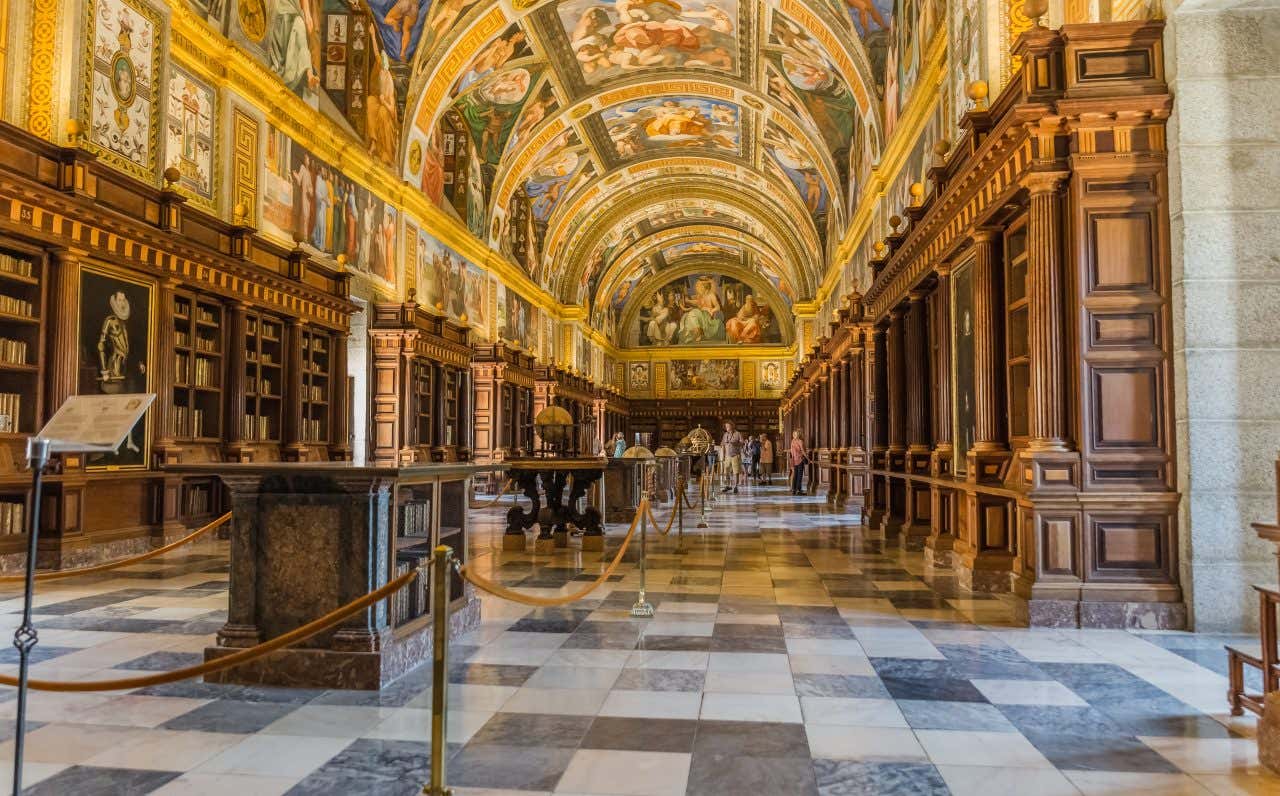
How to Get There
On many weekends throughout the year, you can take the historic Philip II Train, complete with staff dressed in period costume—the best way to start any historic adventure in Madrid. Check out the train schedule here.
Outside the Phillip II Train season, take the C-3 or C-8 Cercanías lines and arrive in under an hour.
You might also consider this El Escorial Half-Day Trip from Madrid, which will make your life a tad easier and will also ensure you delve deep into the town and its monastery with the help of a guide. You also have the opportunity to select the option that includes a trip to the Valley of the Fallen, where you’ll be able to learn about some controversial topics surrounding the Spanish Civil War.
Other Things to Do While in El Escorial
While visiting the largest Renaissance building in the world can feel overwhelming, the town of San Lorenzo de El Escorial is also well worth exploring—its charming streets, traditional cafés, and mountain views offer a peaceful contrast to the grandeur of the palace complex. A complete guided tour of El Escorial will ensure you don’t miss the highlights. Or opt for a private tour for a personalised experience catered to your interests.
If you’re up for some fresh air, you can also take a scenic hike in the nearby Sierra de Guadarrama, with trails that start just outside the town and offer stunning views of the monastery from above.
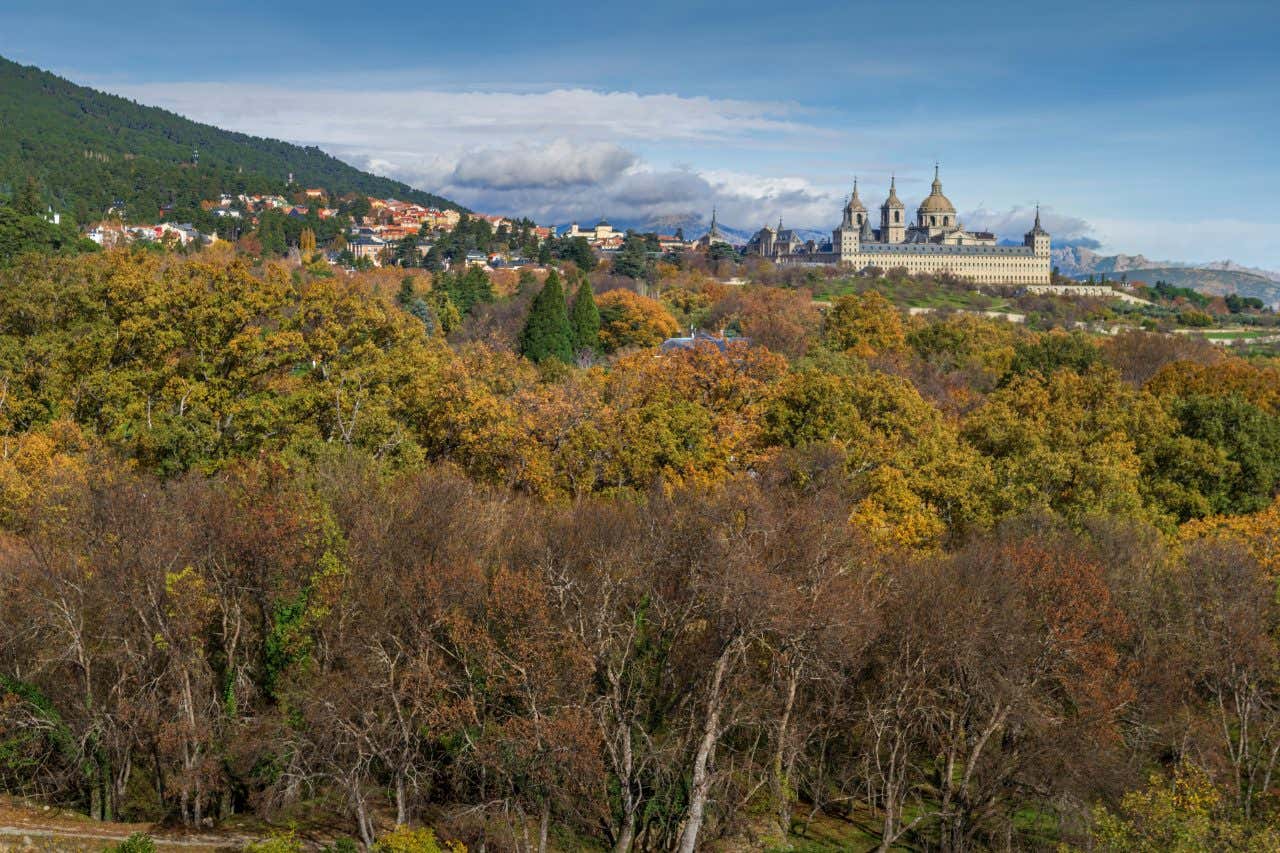
Explore Alcalá de Henares, Home to Cervantes
The town of Alcalá de Henares, located just 30 kilometres (19 miles) northeast of Madrid, played a major role in shaping Spain’s literary and academic legacy. Best known as the birthplace of Miguel de Cervantes, author of Don Quixote, this charming university town is full of literary magic, cobblestone streets, vibrant energy, and historic monuments at every turn.
Founded in the early 16th century by Cardinal Cisneros, Alcalá de Henares was the world’s first planned university city. It wasn’t just a place of study—it was a visionary urban project designed around humanist ideals. The result was a model that would go on to inspire universities throughout Europe and Latin America, as Spanish missionaries exported its blueprint to the New World.
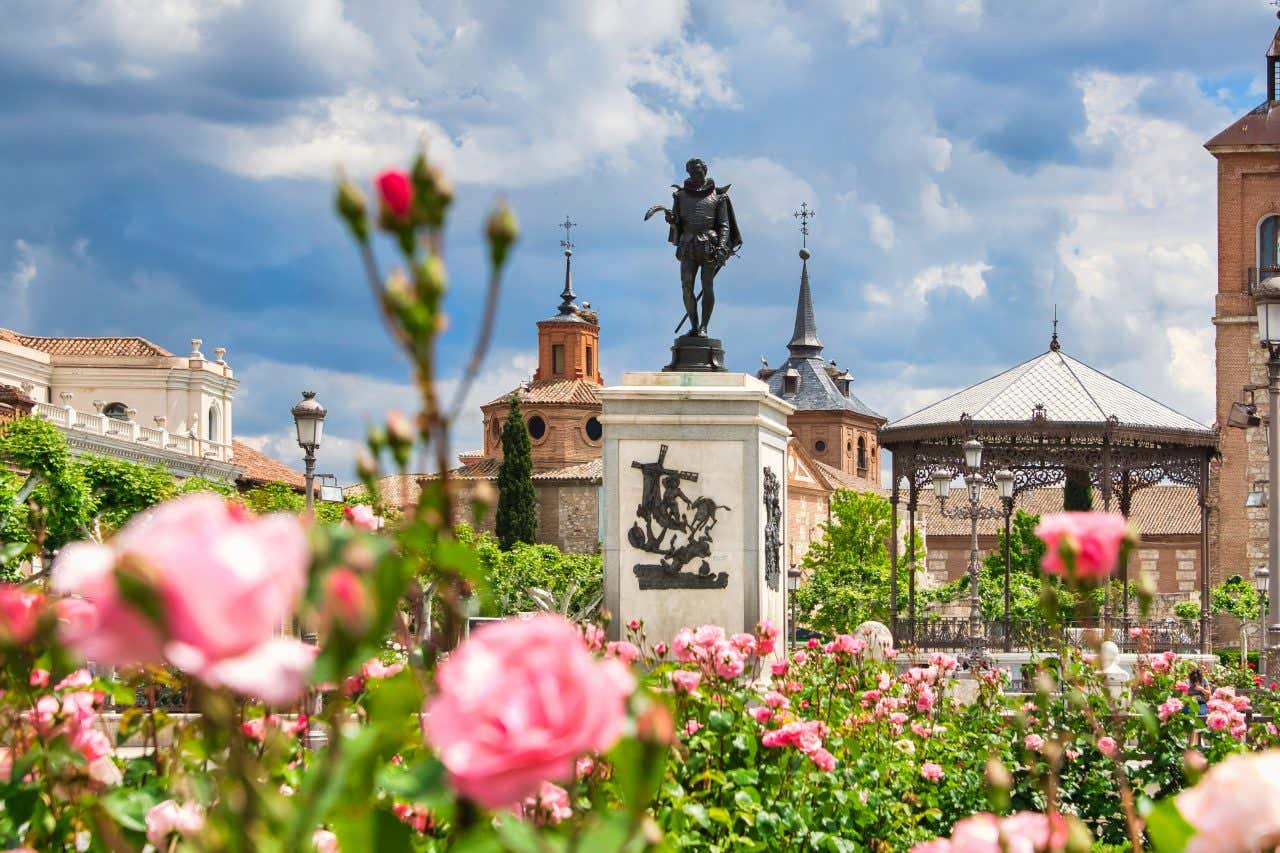
Earning its UNESCO World Heritage Site status in 1998, Alcalá stands out not only for its intellectual achievements but also for the harmony of its architecture and urban layout. The historic precinct includes the Colegio Mayor de San Ildefonso, Plaza Cervantes, and the Magistral Cathedral, all connected by a grid of medieval streets that reflect the city’s layered history.
This was also the place where the Spanish language was first standardized, laying the groundwork for global communication in Spanish-speaking countries. Thanks to this legacy, even figures of the Spanish Empire like Hernán Cortés could report back to the Crown in a shared, codified language.
How to Get There
From Madrid’s central Atocha station, you can reach Alcalá de Henares in less than 1 hour via Cercanías train lines C-2 or C-7.
You can also take this Alcalá de Henares Day Trip from Madrid, so you don’t have to worry about any of the logistics. It includes transportation, a guided tour of the city and of the stunning university, and enough free time so you can explore a bit on your own.
Best Time to Go
We recommend visiting during October’s Semana Cervantina, when the town recreates its 16th-century golden age. The Mercado Cervantino transforms the streets into a Renaissance marketplace with over 300 stalls, transporting you back in time to a thriving Spanish empire. The parades, scholarly debates, and theatrical performances offer a glimpse into the cultural confidence that accompanied Spanish expansion.
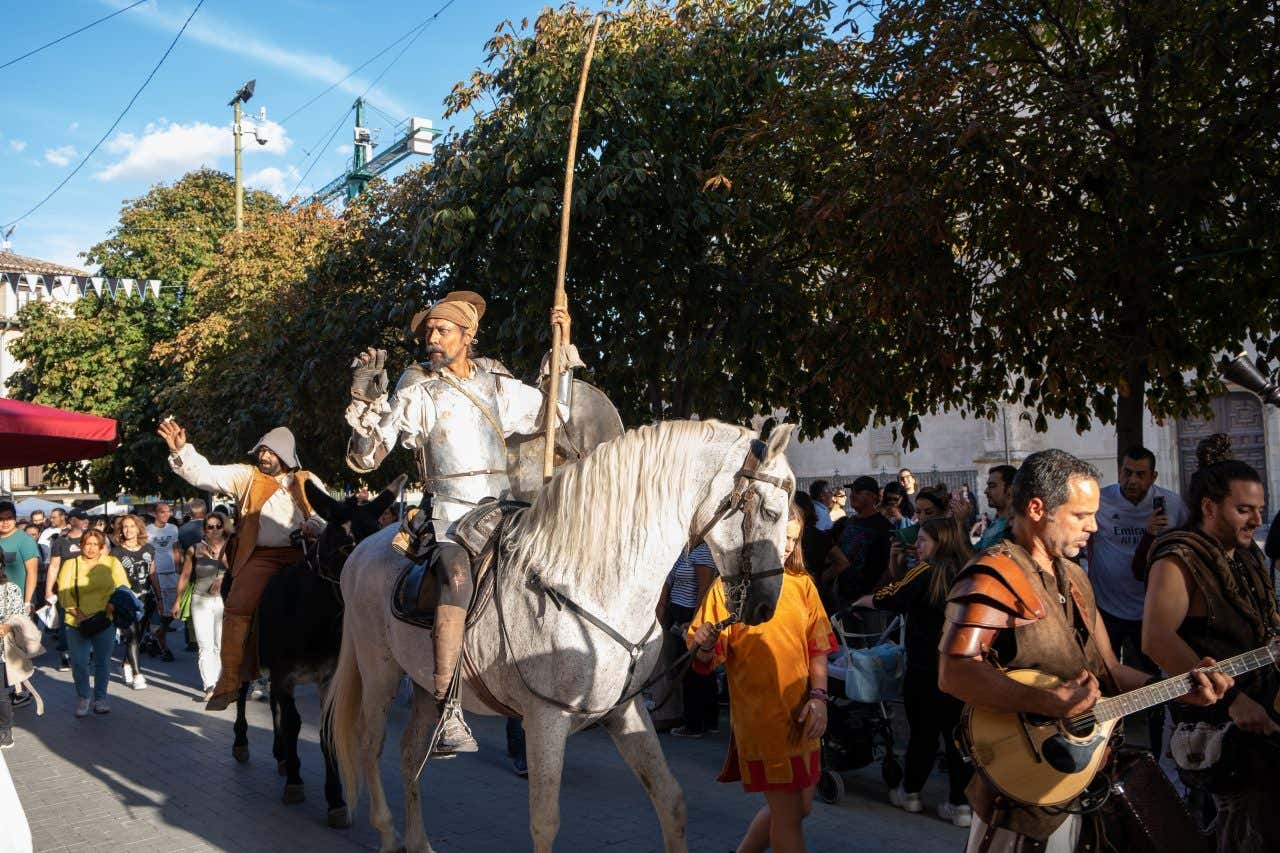
Other Things to Do While in Alcalá de Henares
Explore Alcalá at your own pace with a private tour of the historic university town. Stroll down Calle Mayor and see the Archiepiscopal Palace, a seat of power dating back to the Middle Ages.
Want to explore Cervantes’ legacy up close? Step inside the Cervantes Birthplace Museum for a glimpse into the early life and times of the author. The museum recreates a typical 16th-century Castilian home, offering a unique perspective on the world that inspired Don Quixote.
Beyond Madrid’s Borders
Madrid is so rich in cultural heritage that it spills over into the surrounding landscapes. What’s left is a tapestry of experiences that span centuries. The best part? These UNESCO World Heritage Sites are incredibly accessible from the capital city, offering the perfect day trip or weekend getaway opportunity, in just under an hour.
But these sites preserve more than a storied past; each site offers a look into the legacy of Spanish innovation that has shaped the modern world. From educational models in Alcalá to architectural feats in El Escorial, they continue to inspire even centuries later.
So while Madrid proper is sure to make you fall in love with its museums and monuments, don’t forget to venture beyond the city limits, into hidden gem territory. Sometimes, the best adventures can be found just a short train ride away from the city centre. Explore all tours in the Region of Madrid with Civitatis and book your next adventure!





